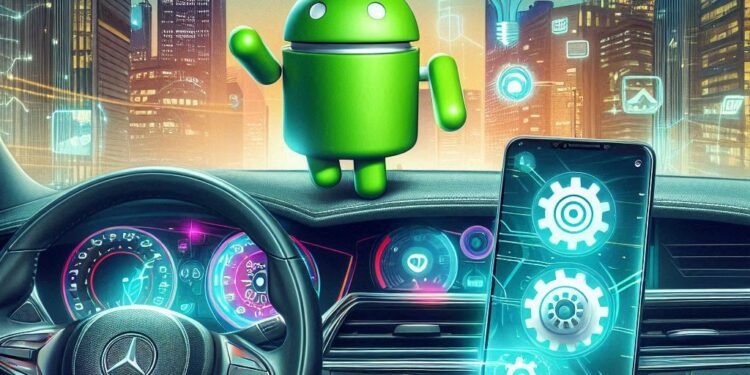In an age where connectivity is king, the integration of technology into every aspect of our lives is inevitable. One of the most exciting developments is the inclusion of Messaging and VoIP (Voice over Internet Protocol) apps in Android Automotive cars.
This innovation promises to transform the driving experience, making it safer and more connected than ever before. As vehicles become smarter, the lines between our digital and physical worlds continue to blur, paving the way for a future where staying in touch on the go is seamless and intuitive.
What is Android Automotive OS?
Android Automotive OS is a version of Google’s Android operating system tailored specifically for vehicles. Unlike Android Auto, which mirrors your smartphone’s interface onto the car’s display, Android Automotive OS is built directly into the car’s hardware.
This means it doesn’t require a connected smartphone to operate, offering a more integrated and seamless user experience.
With features like Google Maps, Google Assistant, and access to a variety of apps from the Google Play Store, Android Automotive OS is designed to bring the full power of Android to your car’s dashboard.
The Rise of Messaging and VoIP Apps in Vehicles
Staying connected while driving has always been a challenge. Traditional methods of communication, such as using a phone, can be distracting and dangerous. This is where Messaging and VoIP apps come into play.
These apps allow drivers and passengers to stay in touch through text and voice without taking their eyes off the road or their hands off the wheel. Voice commands and hands-free operation are central to these apps, ensuring that communication remains safe and convenient.
Upcoming Changes: Messaging and VoIP Apps in Android Automotive
Google has announced that popular Messaging and VoIP apps like WhatsApp, Telegram, and Zoom will soon be available on Android Automotive OS. This means drivers and passengers will be able to send messages, make calls, and participate in video conferences directly from the car’s infotainment system.
These integrations are part of Google’s broader strategy to enhance in-car connectivity and make driving more enjoyable and productive. Partnerships with major automakers are already in place, ensuring a smooth rollout of these new features.
Benefits of This Integration
The integration of Messaging and VoIP apps in Android Automotive cars offers several benefits:
- Safety: Voice commands and hands-free operation reduce the need for drivers to handle their phones, minimizing distractions and improving road safety.
- Convenience: Drivers can stay connected without needing to pull over or rely on their smartphones.
- Enhanced Communication: Passengers can also use these apps, making long trips more enjoyable and productive.
- Future-Proofing: As these technologies continue to evolve, cars equipped with Android Automotive OS will remain at the forefront of in-car connectivity.
Potential Challenges and Concerns
While the integration of Messaging and VoIP apps is promising, it does come with potential challenges:
- Distraction: Even with hands-free operation, there’s a risk that these apps could distract drivers.
- Privacy: Ensuring the security and privacy of communications is crucial, especially in shared vehicles.
- Compatibility: Not all cars currently support Android Automotive OS, which may limit accessibility.
To address these concerns, manufacturers and developers are working on advanced voice recognition systems and stringent security measures to ensure a safe and secure user experience.
Conclusion
Integrating Messaging and VoIP apps into Android Automotive cars marks a significant step forward in the evolution of in-car connectivity. As technology advances, the ways we stay connected on the go will only improve. This development enhances convenience and communication and underscores the importance of safety in modern vehicles. The future of driving is bright, and staying in touch has never been easier.












